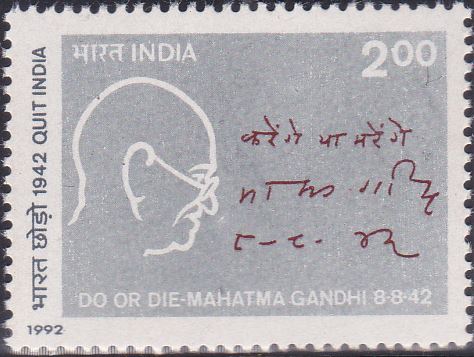
India on Quit India Movement 1992
Complete Set of 2 nos of postage stamps on the Golden Jubilee of the Quit India 1942, a movement Mahatma Gandhi demanding an end to British Rule in India :
Issued by India
Issued on Aug 9, 1992
Issued for : The Department of Posts is privileged to issue two special postage stamps to commemorate the 50th anniversary of the ‘QUIT INDIA MOVEMENT’.
The First Day Cover design is a reproduction of the inscription on the Gandhi Memorial Stambh (Column). The inscription on the Stambh is in Marathi and Hindi and reads as follows:–
“Under the unique leadership of Mahatma Gandhi, the Meeting of All India Congress Committee was held on 7th and 8th August, 1942 and the historic resolution entitled ‘QUIT INDIA’ was passed. A clarion call was given to every Indian with the slogan ‘DO OR DIE’. This column has been dedicated to the nation by Gandhi Smarak Nidhi and Municipal Corporation of Greater Bombay.”
Description of Design :
Stamp: India Security Press.
First Day Cover: Quit India 1942.
Cancellation: Sankha Samant
Type : Stamps, Mint Condition
Colour : Two Colour
Denomination : 100 & 200 Paise
Overall size : 3.91 x 2.90 cms.
Printing size : 3.55 x 2.54 cms.
Perforation : 13 x 13
Paper : Indigenous Un W/M gravure coated gummed Stamp Paper
Number Printed : 6,00,000
Number per issue sheet : 35
Printing Process : Photo Offset
Printed by : India Security Press
About :
- “Let every Indian consider himself to be a true man. He must be ready for the actual attainment of freedom or perish in the attempt…… There is no compromise on the demand for freedom. Freedom first, and then only the rest. Do not be cowards, because cowards have no right to live. Freedom shall be your “Mantra”…….”
- “Here is a mantra, a short one that I give you. You may imprint it on your hearts and let every breath of yours give expression to it. The mantra is ‘Do or Die’. We shall either free India or die in the attempt. We shall not live to see the perpetuation of our slavery.”
- It was with these inspiring words that Mahatma Gandhi in the speech he delivered just after the passing of the historic ‘Quit India’ resolution by the All-India Congress Committee on 8th August, 1942 at Bombay ushered in a new phase in the glorious struggle for India’s freedom.
- A 12 point programme for the QUIT INDIA Movement was issued, the last being “Spinning……. If millions spin, it will administer a powerful stimulus to the struggle”. The August Revolution was a historic event and it had a tremendous influence on the future of Indian Nationalism. The resolution authorised Gandhiji to lead a mass movement on non-violent lines for achieving independence. Thus a revolutionary instinct was kindled and forged amongst the masses. The passing of the resolution was immediately followed by the arrest of Gandhiji, Panditji, Sardar Patel, Rajendra Babu, Maulana Azad and all other prominent leaders and the adoption of other stern measures by the British Government. These repressive measures led to a widespread revolutionary upsurge of the people. The government resorted to burning of villages, machine gunning and aerial attacks on the people to suppress the uprising, which resulted in killing of thousands of men, women and children. The Movement brought forth a host of leaders and martyrs who performed great deeds of heroism and sacrifice. This mass revolutionary movement was a dangerous portent for an alien rule and manifested the new and resurgent forces of nationalism that were at work. It ultimately culminated in the grant of independence to India.
- Not only did the “Quit India” movement kindle a universal desire for freedom by inspiring the people to great deeds of heroism and sacrifice but it created new dimensions in a subject people’s struggle for freedom through non-violent and honourable methods.
- The mantra ‘DO OR DIE’ given by Mahatma Gandhi 50 years ago on this august occasion resounds even today reminding us of the great sacrifices made by our leaders to free the motherland.


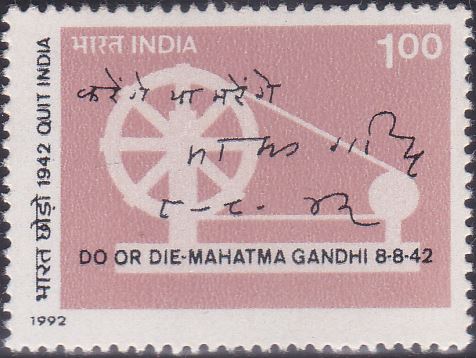

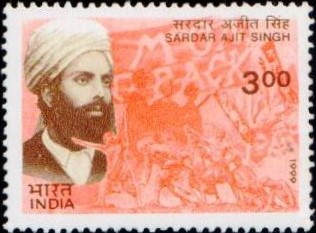
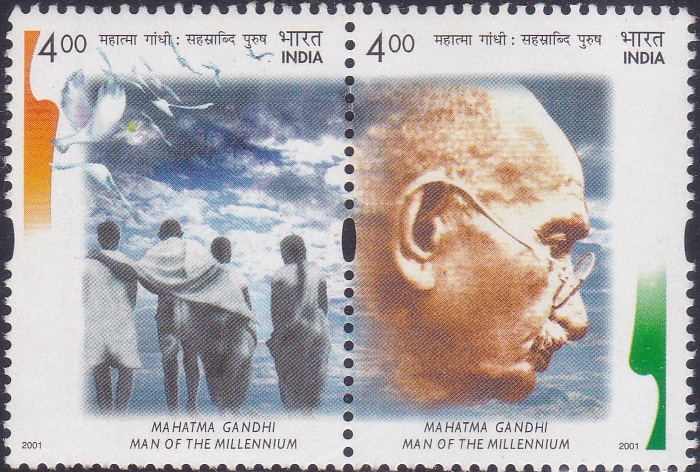
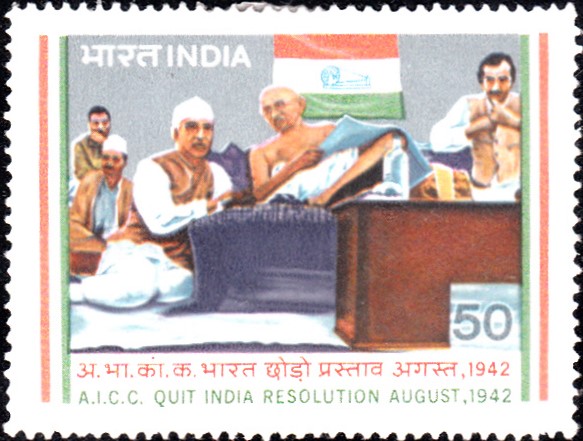
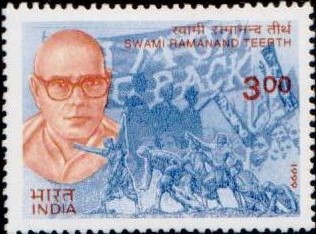
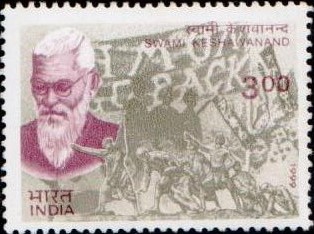
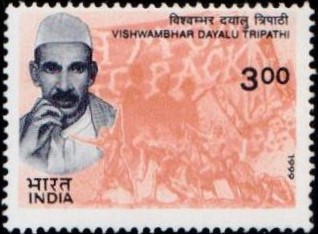
[…] and was in prison at Tramba (now called Kasturbagram) 13 km away from Rajkot. Again during the Quit India Movement in 1942 she was imprisoned in August and that proved to be her last journey. She breathed her last […]
[…] with the Congress he was arrested in 1941 for individual “satyagraha” and again during the Quit India Movement in 1942. He lost his eyesight during detention, but this did not douse the light of his resilient […]
[…] of “Purna Swaraj”. Along with the Non-Cooperation and Civil Disobedience movements, the “Quit India movement” was the third great phase in the mass struggle for freedom, with the nation taking to the […]
[…] in 1922, influenced by Gandhiji. Playing active part in the Vedaranyam Salt Satyagraha of 1930, Quit India Movement of 1942 and many other movements, he had to spend many years in jail. He tirelessly campaigned for […]
[…] of imprisonment which Asaf Ali courted during the freedom movement was in the wake of the ‘Quit India‘ resolution adopted by the All India Congress Committee in August 1942. He was detained at […]
[…] she visited his Ashram at Wardha when she was studying in Lahore. As a student she took part in the Quit India Movement in 1942. She went underground and edited a journal ‘Hamara Sangram‘. For the education […]
[…] active part in all the campaigns of Gandhiji from the Kaira No–Rent Campaign in 1917 to the Quit India Movement in 1942. He underwent several terms of imprisonment during the struggle for the country’s […]
[…] August 9, 1943, the first anniversary of Quit India Day, Joachim and Violet Alva founded FORUM, the Indian weekly news magazine, which became known […]
[…] Congress was alarmed and after the failure of the Cripps Mission, they launched the violent ‘Quit India‘ campaign against the British in 1942. All this was alien to Jinnah‘s nature, and he […]
[…] roles in organising peasant’s movements in Kheda, Borsad and Bardoli in Gujarat and promoted the Quit India Movement against the British regime. He organised relief camps for refugees in Punjab and […]
[…] The Congress was alarmed and after the failure of the Cripps Mission, they launched the violent ‘Quit India’ campaign against the British in 1942. All this was alien to Jinnah’s nature, and he kept the […]
[…] 1940 to 1946 he was again elected President of the Congress. Under his presidentship the historic Quit India resolution was passed at Bombay. Subsequently he was arrested along with other leaders and detained […]
[…] supporting the resolution on freedom for the country, and for his role in the Non-Cooperation and Quit India […]
[…] Movement in 1921, Salt Satyagraha in 1930, the Individual Civil Obedience Movement in 1941 and the Quit India Movement in 1942. He suffered imprisonment and detention for his participation in these […]
[…] leaders were arrested in Bombay by the British Government in a lightning move to forestall the “Quit India” struggle. Kasturba resolved to address that evening, at Shivaji Park, a mass meeting which […]
[…] and was in prison at Tramba (now called Kasturbagram) 13 km away from Rajkot. Again during the Quit India Movement in 1942 she was imprisoned in August and that proved to be her last journey. She breathed […]
[…] with the Congress he was arrested in 1941 for individual “satyagraha” and again during the Quit India Movement in 1942. He lost his eyesight during detention, but this did not douse the light of his resilient […]
[…] 1930 Loknayak Aney joined Mahatma Gandhi in the Quit India movement. In 1931 he became Member of the Congress Working Committee and in 1933 was elected President of […]
[…] joined the freedom struggle in 1942 by actively participating in the Quit India movement. After independence, he was elected to Maharashtra Assembly in 1952 from Sangli […]
[…] He drew inspiration from Mahatma Gandhi and took an active part in the Swadeshi and Quit India […]
[…] again in 1940. Hardly had he come out of prison when he was again detained in connection with the Quit India Movement in […]
[…] (“the people’s leader”). As a student activist, he left his graduate college to join the Quit India Movement and spent 26 months in prison while participating in the Indian independence movement. In […]
[…] for the nation’s freedom movement. He was subjected to house arrest in the year 1939. During the Quit India movement, he was imprisoned in Nagpur Central […]
[…] social work of Sathyashodhak Movement launched by Mahatma Jyotiba Phule. He also took part in the Quit India Movement and was imprisoned for 15 […]
[…] Chavan actively participated in the freedom movement and played a major role in the 1942 “Quit India” movement in Satara District. His political career took wings with his appointment as […]
[…] eight years, he emerged with his convictions unscathed. J.P. played an inspiring role during the Quit India Movement which started in 1942. His escapades and underground activities on the face of an intensive manhunt […]
[…] Narayan was in Hazaribagh prison when Mahatma Gandhi launched the Quit India Movement in 1942. He escaped from the prison to organise anti-British Azad Dasta, a guerilla force. He was […]
[…] It was generally thought earlier that independence was to be given to India by somebody else. The Quit India Movement of 1942 and the formation of Azad Hind Government next year convinced the Indian people […]